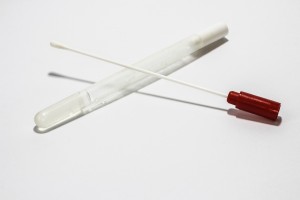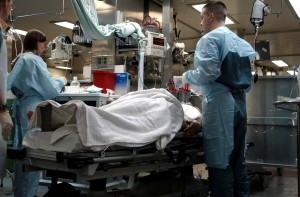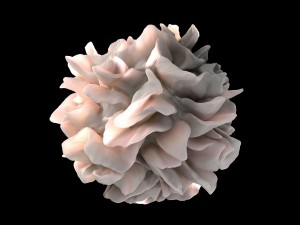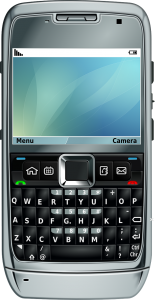
Liquid Biopsy From a Saliva Sample
What is a liquid biopsy? For many, a biopsy creates images of needles or a small incision where the doctor is trying to get a sample of tissue for testing. The needle biopsy is efficient in that the needle extracts a sample of cells without the need for an incision – certainly often preferred by both patients and doctors.
Conversely, a liquid biopsy uses the specific technology called Electro Field Induced Release and Measurement or EFIRM. The EFIRM technology is like a special operations team, which have precise abilities to detect abnormal events or dangerous contents within the sample. The liquid biopsy uses saliva and the doctor is able to identify abnormalities indicating a tumor is present.
A limitation of a needle biopsy is that the particular cells the needle retrieves may not be representative or like the cells of the tumor that the doctor needs to examine. Also, the physical location where a sample is required from in our bodies may be difficult for a needle to access. For example, deep in our lungs.
Similarly, a significant restriction of a needle biopsy is that it cannot provide any information about cancer cells that have spread. When this occurs, it is called a metastasis or a spread of cancer in the body away from the original tumor. The majority of cancer deaths are the result of a metastasis. The cancer is said to have spread and becomes resistant to any treatments. Overall, the needle and many incision biopsies can inhibit the ability of a doctor to diagnose cancer quickly and identify it accurately.
Processes that are happening in our bodies at the cell level, the movement of material and information within our cells is analogous to a busy highway border crossing between countries. There are a number of things happening simultaneously. Among all the activity, vehicles of all types are pulling up, stopping, a selection of all vehicles are inspected while other vehicles pass straight through the barrier.
In our bodies, at the cell level, there is something called an exosome, which can be thought of as a particular model of a truck carrying and transporting material in our cells. It is important that exosomes, or special model trucks keep their load or contents separate from other material in our cells. Furthermore, when exosomes transport unusual or abnormal material, the liquid biopsy technology is like having a special identification unit that has cell-vision goggles that can ‘see’ material that is abnormal.
The liquid biopsy is able to detect activity that indicates something other than normal cell processes are occurring. It is precisely what the exosome takes with it and how it behaves within the cell that makes it a good marker for a liquid biopsy. Overall, the liquid biopsy technology is able to detect contents and activity within the cell that should not be there under normal healthy circumstances.
A researcher in this field, named Professor Wong presented the new technology recently in Washington, DC. He is examining the usefulness of a liquid biopsy that uses a saliva sample. This technology provides real-time information to the doctor and the patient is spared any sort of invasive diagnostic tests.
Excitingly, research into the liquid biopsy is providing significant hope in the advancement of diagnosing cancer quicker, earlier and the ability to return crucial information about the possible spread of cancer inthe body. Results also identifying vital information to target treatment. Overall, the liquid biopsy is showing tremendous promise as a reliable and effective diagnostic tool for cancer.
REFERENCES
Azmi, A. S., Bao, B., & Sarkar, F. H. (2013). Exosomes in Cancer Development, Metastasis and Drug Resistance: A Comprehensive Review.Cancer Metastasis Reviews, 32(0), 10.1007/s10555–013–9441–9. http://doi.org/10.1007/s10555-013-9441-9
Hiddemann, W. (2015). [Cancer screening – useful but not so easy]. Deutsche Medizinische Wochenschrift (1946), 140(19), 1424. http://doi.org/10.1055/s-0041-106027
Khanna, P., & Walt, D. R. (2015). Salivary diagnostics using a portable point-of-service platform: a review. Clinical Therapeutics, 37(3), 498–504. http://doi.org/10.1016/j.clinthera.2015.02.004
Wei, F., Lin, C.-C., Yang, S.-C., Joon, A., Feng, Z., Troche, G. Induced Release and Measurement ( EFIRM ) can detect EGFR muta7ons directly from body fluids of lung cancer pa7ents (p. 7). Los Angeles: University of California, School of Dentistry of Pathology.
Wong, D. T. W. (2015). Salivary extracellular noncoding RNA: emerging biomarkers for molecular diagnostics. Clinical Therapeutics, 37(3), 540–51. http://doi.org/10.1016/j.clinthera.2015.02.017
Zhang, Y., Sun, J., Lin, C.-C., Abemayor, E., Wang, M. B., & Wong, D. T. W. (2016). The emerging landscape of salivary diagnostics. Periodontology 2000, 70(1), 38–52. http://doi.org/10.1111/prd.12099

Have You Ever Thought About Your Personal or Health Information Being Shared in the ER?
The technology research information for this piece of news is from the BlackBerry (BB) Business Blog. It is a short update but important as many patients in the emergency room do not realize that their personal and health information may be at risk as their health care team communicates and shares digital information that is not secure. BlackBerry is helping hospitals improve secure communication.
No one likes waiting in the emergency room. The more critical the reason for the visit to the ER, the more wait times may impact the outcome. Interestingly, the research presented by the Joint Committee demonstrates that when things do not go well in the ER it is often related to communication. (See Lindsay reference below)
A majority of healthcare providers in the ER are using smartphone technology but the concern is that a majority of clinicians and staff are using their own personal devices, which may not be on secure communication platforms. This raises a whole host of privacy and confidentiality concerns about a patient’s personal and health information. Clinicians and staff require two main features of communication. One, they need the ability to communication in real-time and multiple individuals at once and two must be able to do using a secure communication platform that protects the patient’s information.
BlackBerry offers the technology for teams to use their BBM secure options. Teams are able to collaborate together, use instant messaging all in real-time. Importantly, the communication data is encrypted. The organization’s IT administrators are able to control the communication, for example, restrict the ability to copy chat sessions. A very attractive feature of the BB system is that people working within the organization may use their own devices and the system works across iOS, Android, and BB platforms. Recently, the technology was rolled out in Grand River, Canada
More organizations providing health care with similar requirements for communication must be responsible and both identify and implement communication strategies that provide efficient communication. We also need the communication among our healthcare providers to make sure we receive the best care based on what’s happening at the moment.
Concerningley, most of us don’t give it a second thought when we are dealing with a health crisis that our clinicians may be sharing our personal or health information using their own devices that may not be secure. The BlackBerry technology may improve both our health outcome and protect our privacy during our next hospital visit.
REFERENCES
BlackBerry Clinical Collaboration and Hospital Staff Coordination, Webcast February 3, 2016
Lindsay, C. (2013). Sentinel Event Data Root Causes by Event Type 2004 – June 2013. Root Causes by Event Data 2004-June 2013, 1–29. http://doi.org/5/23/2013



